Have you ever dealt with chronic shoulder pain? Do you know someone who has or is currently struggling with this? Most people at some point in their life deal with shoulder pain. Next to the low back, shoulder pain is the second highest pain expense with an estimated annual health care cost of 7 billion dollars in 2010 (Meislin, Sperling, Stitik 2005). The current medical approach of treating the shoulder as an isolated unit is not creating adequate results and as such (reference my argument for a paradigm shift to holistic treatment) we must look with a broader eye in order to find resolution.
The shoulder itself is the most mobile joint in the body and is typically viewed as the arm bone (humerus) interacting with the shoulder blade (scapula). Although this relationship is anatomically correct, it is short sighted especially when attempting to deal with chronic shoulder dysfunction.
A more complete view of the shoulder begins with looking not just at the arm bone (humerus) and the shoulder blade (scapula), but also how the shoulder blade moves around on the rib cage (thoracic cage). The shoulder blade should be allowed to move and rotate in all directions on the rib cage to allow the arm bone to function from ideal positions. Often times the pain we feel in the shoulder joint is a symptom resulting from the shoulder blade not being in the correct position causing one of the many shoulder tissues to get compressed, stretched, or irritated. This poor shoulder blade positioning is typically due to repetitive use, faulty ergonomics, postural positioning, as well as sleep positions and can result in potential biceps tendonitis, supraspinatus tendonitis, frozen shoulder, upper back/shoulder pain, nerve compressions, headaches and a variety of other complaints.
The Hybrid Health approach first examines major postural issues and overly tight muscles that may be pulling structures (bones, joints, tissues) out of place. Most of us have slouchy posture with both our shoulders and head collapsing inward. Common muscle patterns will show shortening of the pectorals major and miner, latissimus dorsi, levator scapula, deltoid (and others) as well as lengthening of the mid shoulder blade muscles (rhomboids, middle/lower trapezius). Issues from the feet, hips, and head/neck can play a strong role in this as well but we won’t be exploring those in this article.
Mobilizing and lengthening the shortened structures through massage and stretching is a great place to begin. Stretching out the pectoralis major and miner, latissimus dorsi, and levator scapula will help bring the rib cage up and shoulder blades back and down to a more functional position. Putting the shoulder blades closer to its natural position will allow the weakened and stretched muscles to start functioning better by restoring a healthier muscle length. We follow this mobility with exercises to the stabilizing muscles of the shoulder blade which will help to keep it in its neutral position. We must do both the mobilization and activation if we expect to see long lasting results. In addition to the mobilization and activation we must also recognize what daily activities are causing these dysfunctions in the first place and begin making adjustments to minimize their affect no our physical health.
References
Meislin RJ, Sperling JW, Stitik TP (2005) Persistent shoulder pain: epidemiology, patho-physiology, and diagnosis. Am J Orthop 34(12 Suppl):5–9

0 Comments